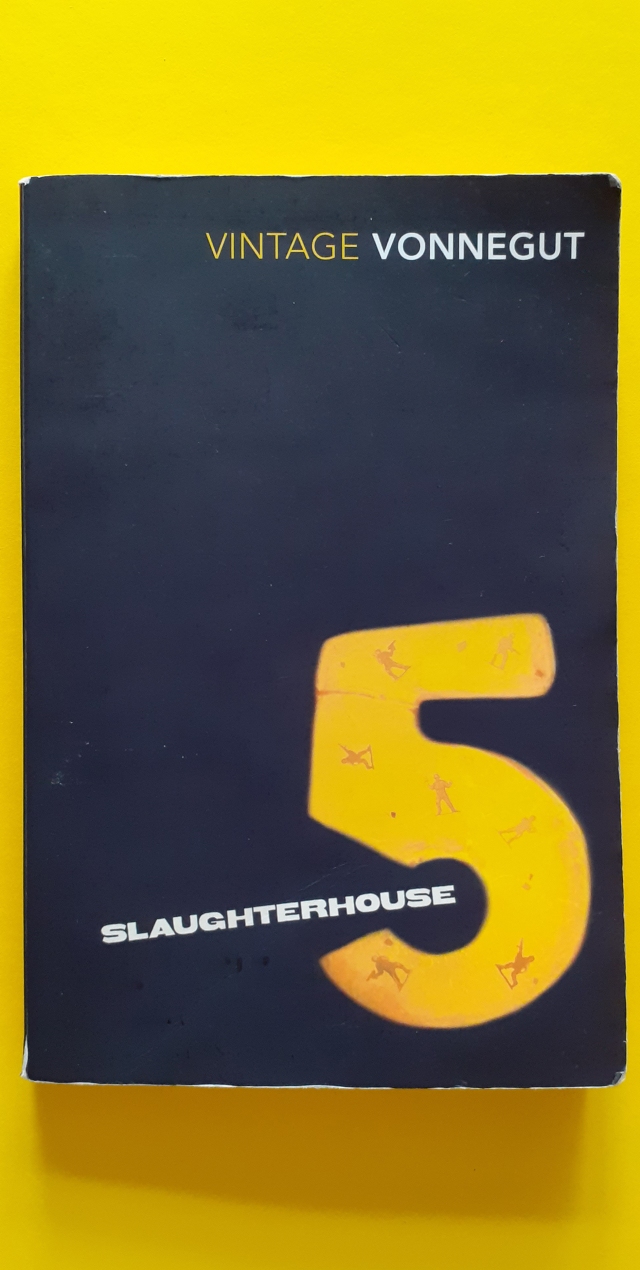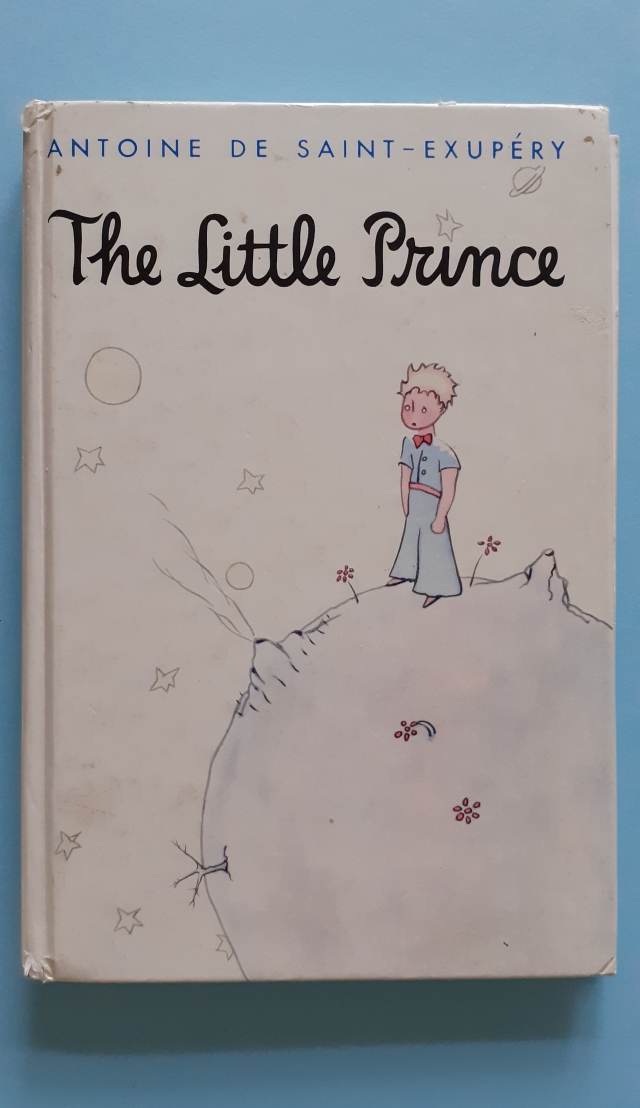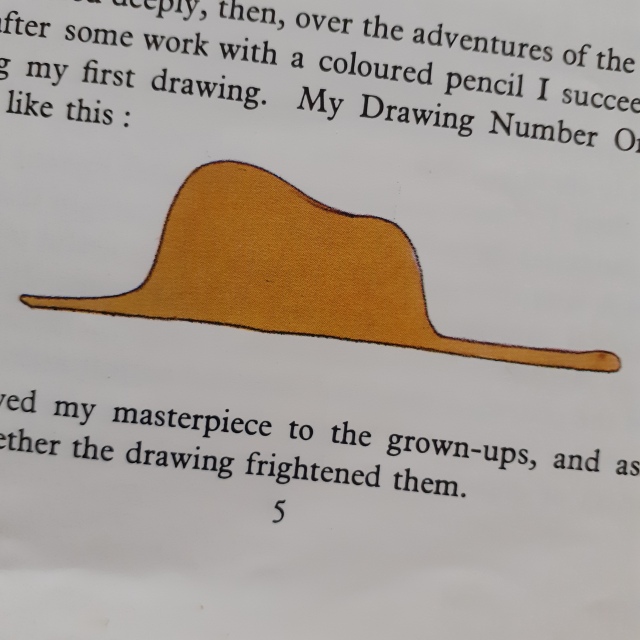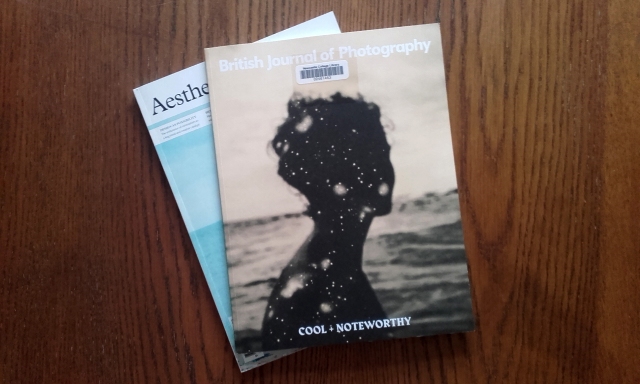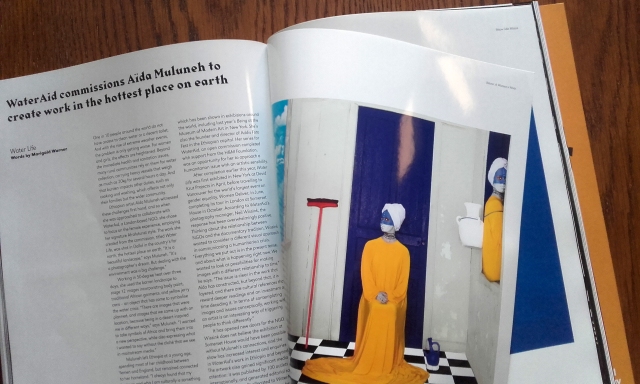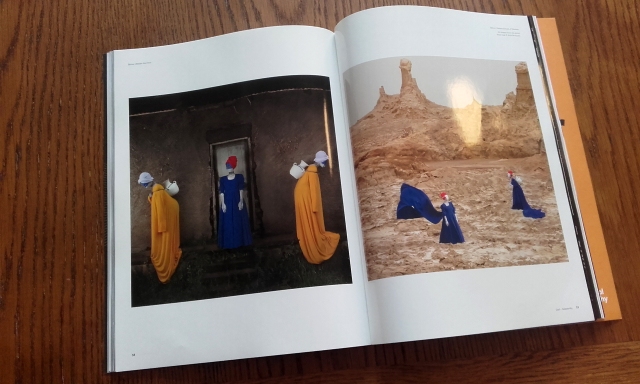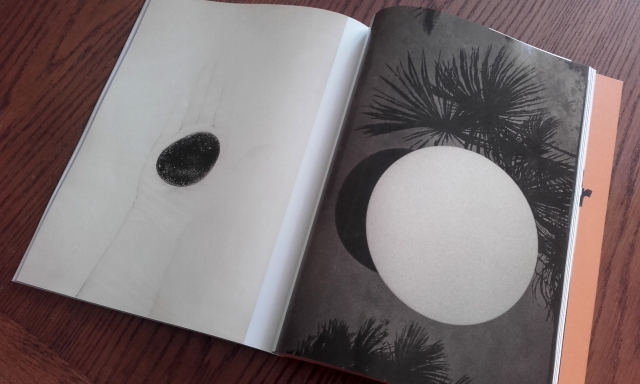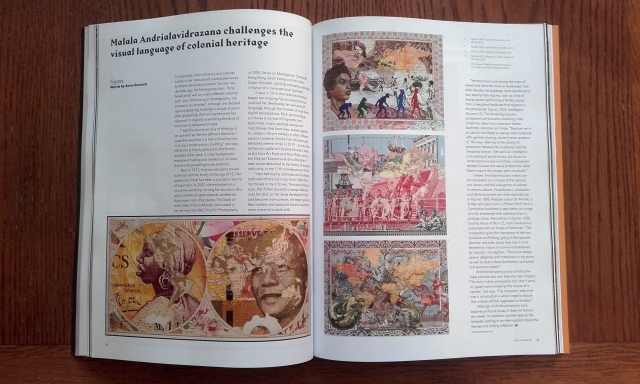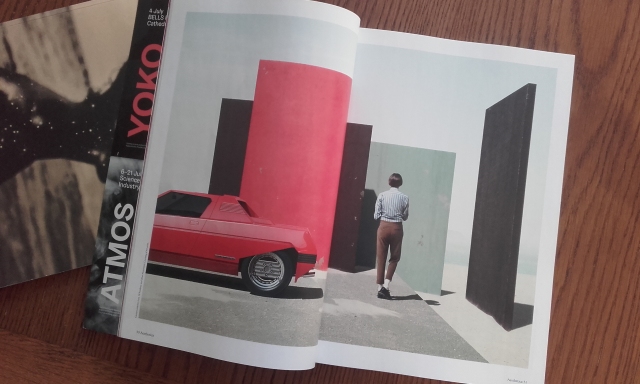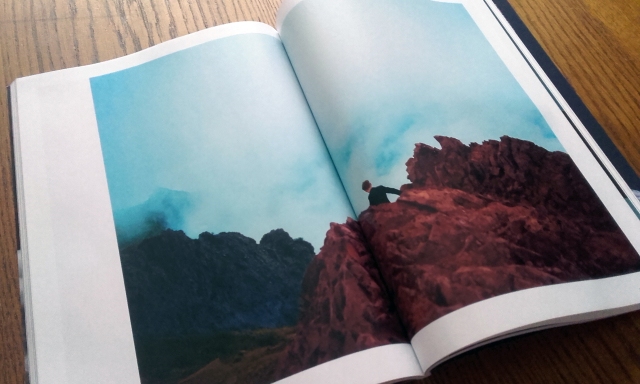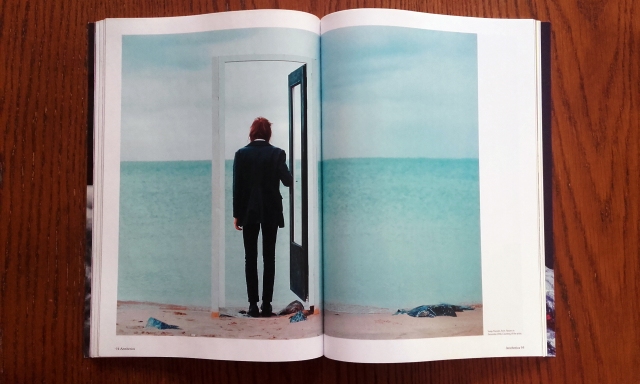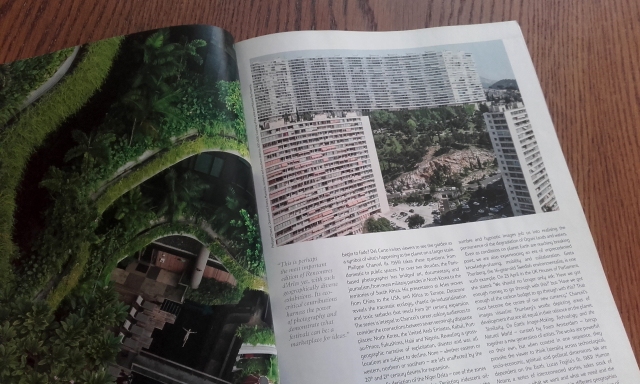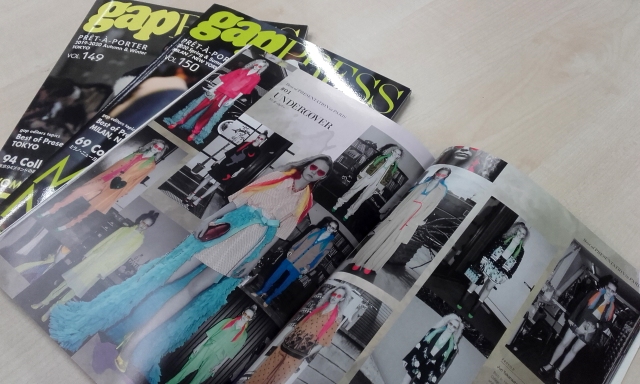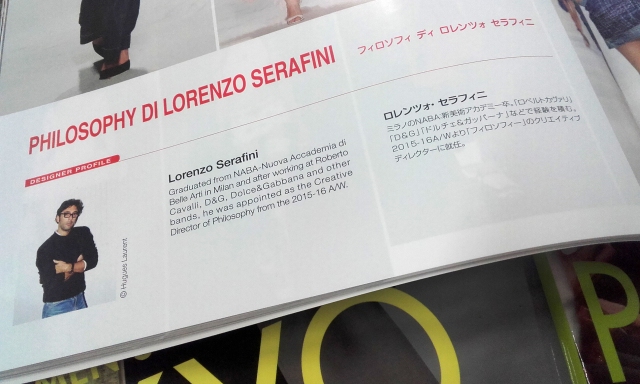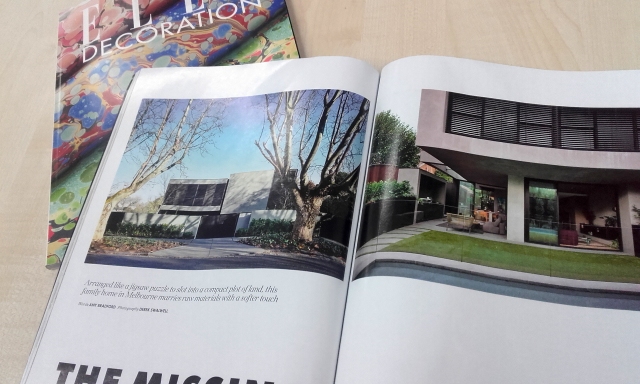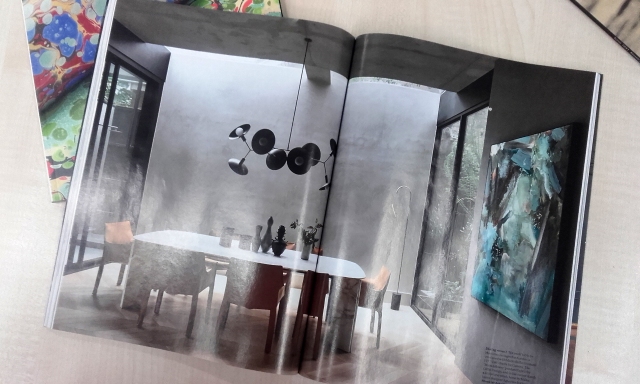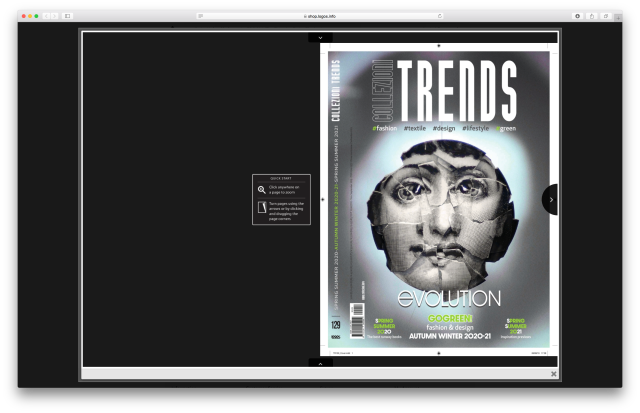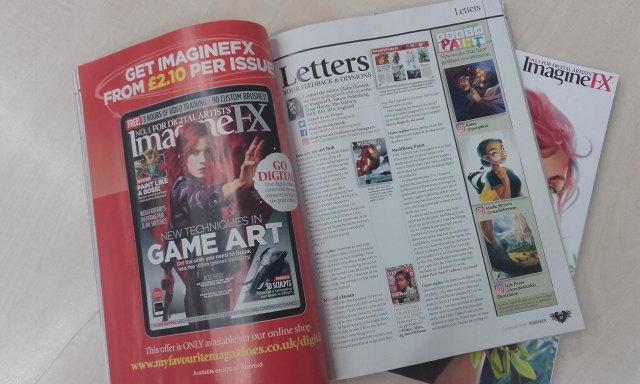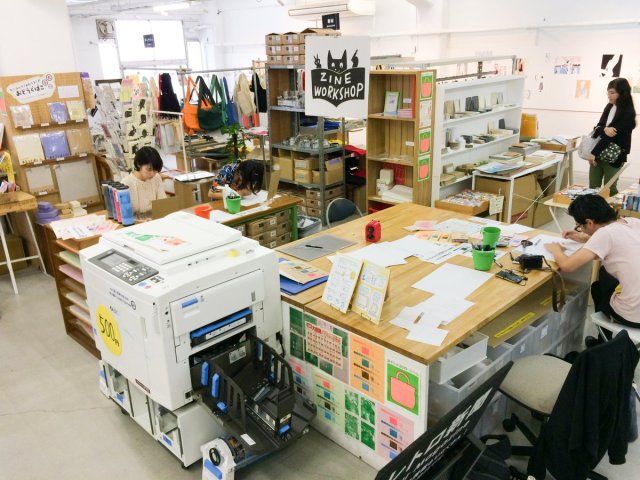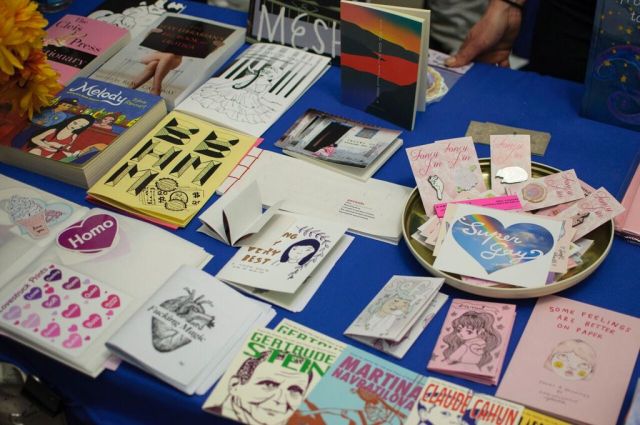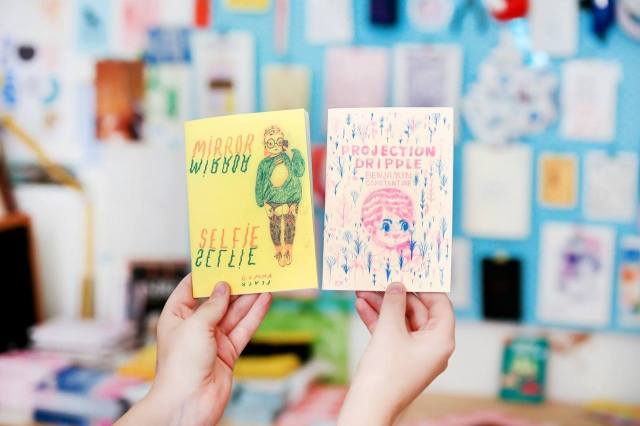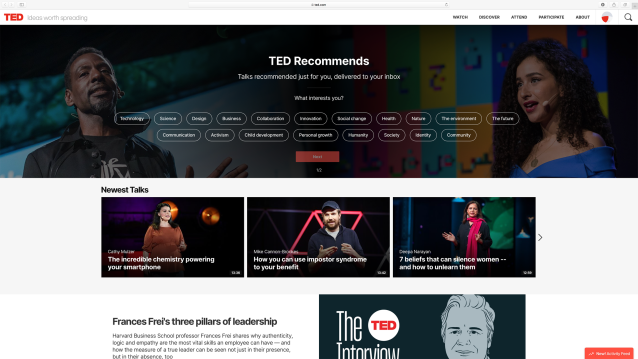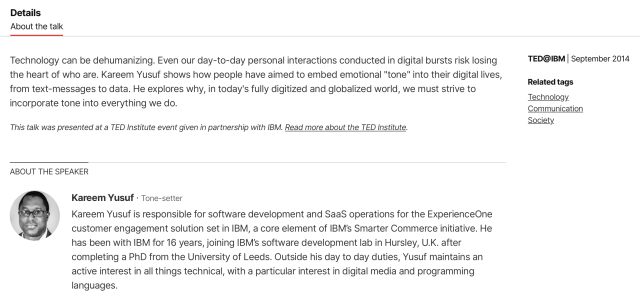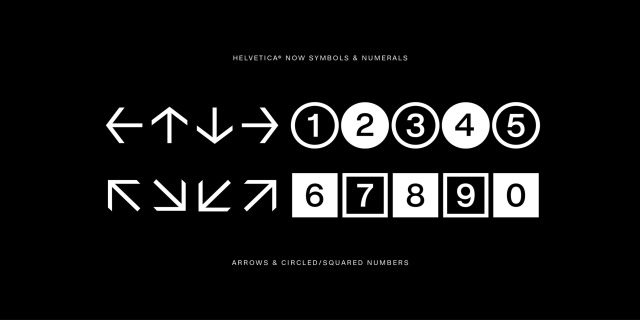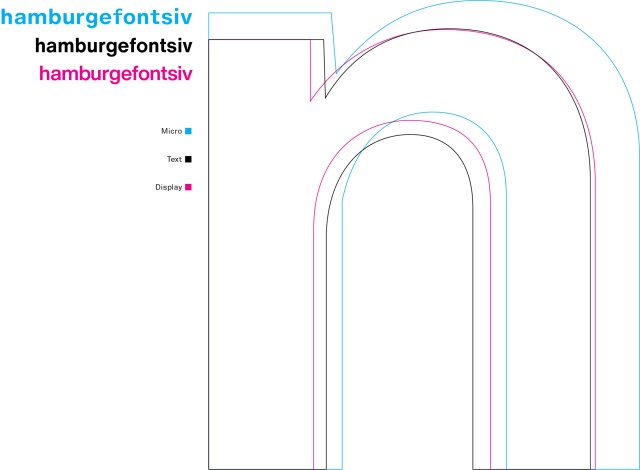Picked up a couple of zines to go towards self-publication research. One is a text-heavy personal zine (often shortened to ‘perzine’) and the other is a collection of photographs. I won’t be keeping either of them; I don’t have the space, but we’ll take a quick look at ’em here and now.
Neither zine is a standard print size, and both use different printing methods!
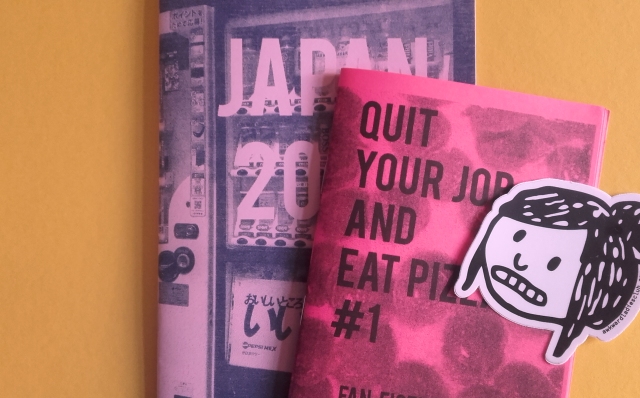
Quit your job and eat pizza #1 Fan Fiction Piracy is printed on playful, hot pink paper and has a silkscreened cover, and photocopied interior. Bound by staples; ‘saddle stitch’ binding. It’s really, very tiny in my hands, but it’s 24 pages long.
The opening segment of Quit your job and eat pizza #1 covers the authors leave from work due to their health, the medication they take, and how they administer it. We’re even treated to diagrams of a samavel injector and the graphic representation of the drug sumatriptan. (I learned something science-y, something… medical!)
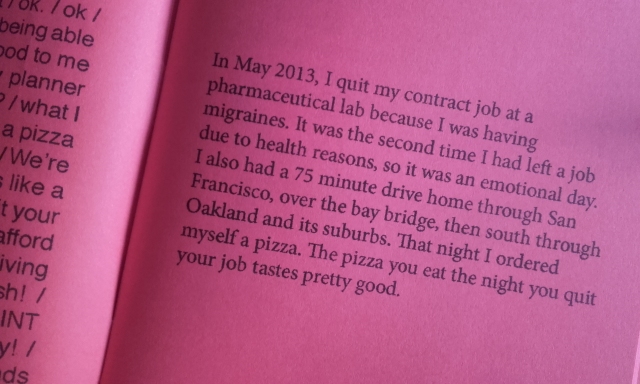
There’s a section titled sci-fi zine piracy in the 1990s. Before the internet became commonly accessible, before fans of movies, television shows, and cartoons had any shared online spaces to show their fan creations (usually prose or illustration) many dedicated fans made zines covering their favourite media and circulated them in conventions. Today, a lot of fans’ secondary content is shared freely on the internet. What I didn’t expect, was to read that folks pirated the rarer zines back then by photocopying an original copy and selling the bootlegs! To combat cheap, illicit copies, some authors produced zines on a particular coloured paper, or stamped the original run for authenticity.
It’s easy to understand why some zines would be coveted; regardless of the genre, if the content was desirable, but the print run was low in number, the second-hand price would be driven up.
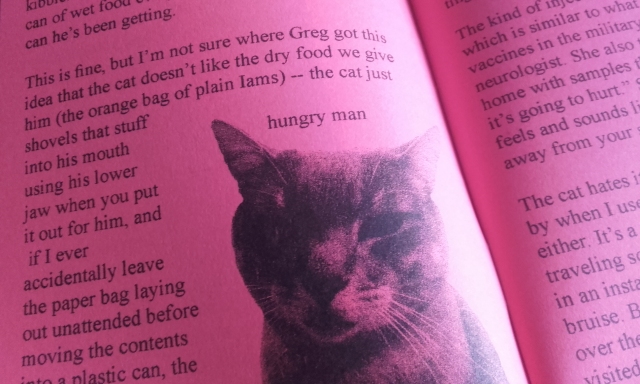
There’s a whole section dedicated to rotten cat teeth, and one focusing on community college print-making. A real variety here.
JAPAN 2009 is risograph printed in federal blue ink on pink paper. It’s saddle stitch. The size is 5.5″ x 8.5″ and it’s 22 pages long. It’s a collection of photos from a trip to Kobe and Tokyo; all without commentary. It’s interesting to see foreign images without context, though I recognised some landmarks and objects.
The photographs are split between the country’s aforementioned prefectures Kobe and Tokyo, which you could see as ‘chapters’. Despite the name, this photograph collection was first printed in 2014, and the copy seen here is from 2019. This is where small-press collecting can get confusing; there’s no way to tell which printing (edition) the copy I have is other than the point of purchase.
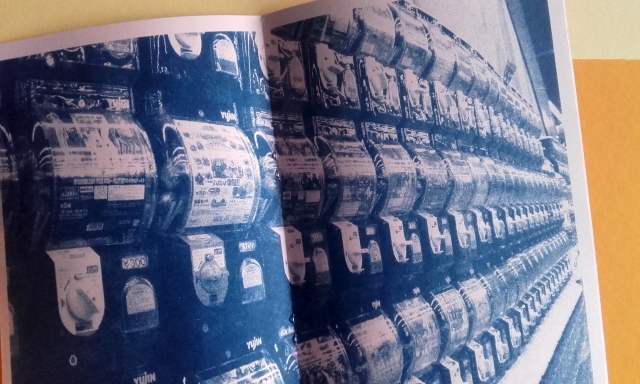
Some photographs take up the entirety of the page. The centrefold shows an image of numerous gachapon machines. Gacha machines take coins, and in return, give up plastic balls with surprise plastic clutter inside (i.e. super-small ‘toys’). The name of the machine comes from the Japanese onomatopoeia for the metal crank turning – ‘gasha’ (ガシャ) – and the sound the plastic ball makes as it drops – ‘pon’ (ポン).
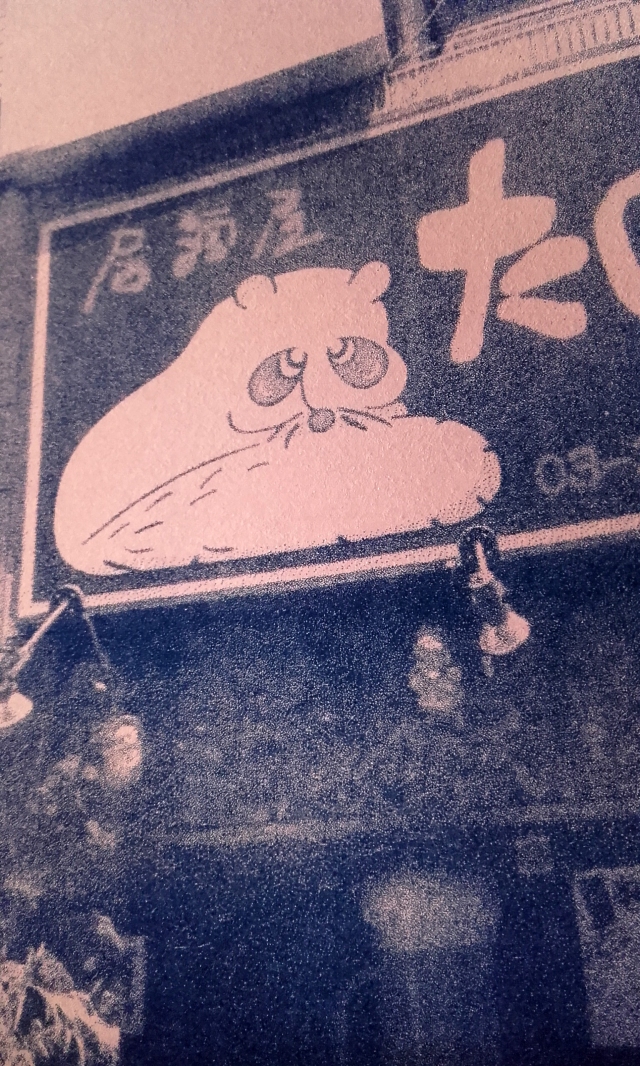
Shopfront with what I’m assuming to be a stylised tanuki (racoon dog). Difficult to tell without seeing any of those telltale balls on display!
JAPAN 2009 is a neat concept. To group photographs from a trip that may otherwise get little exposure and bind them without context, leaves more room for a reader’s personal interpretation. Sort of lends some mystique to the collection of images? Equally, a sort of predominately visual travel-diary may make for a fun project to work on in the future.
Have you read or bought any zines lately?
